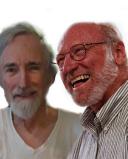Environment
The Cerebral Cortex as an Altered Environment
The ascendance of the human cerebral cortex has created a new environment.
Posted September 29, 2021 Reviewed by Kaja Perina
Key points
- The human cerebral cortex evolved in foraging societies to facilitate survival and group cohesion.
- After the advent agriculture and sedentary living the cortex was no longer constrained by the demands of the natural environment.
- One result of this change was the attempt of humans to control and shape the physical environment.
- Another result was the development of cortex as critic, assessing, examining, and analyzing the behaviors and feelings of individuals.
The liver, the heart, the gonads, and a host of other human organs evolved long before the cerebral cortex reached its current level of power, control, and influence over the human organism. So did, for example, digestion, desire, and innumerable other physiological processes and genetic tendencies. The world before the cortex became what it is today was a very different environment.
Since evolution has no foresight, it could not “anticipate” that the functioning of these pre-existing elements (organs, processes, tendencies, etc.) would not work as they had in a world that had come under the scrutiny of the all-powerful cortex.
An environment that contains a cerebral cortex—able to comment on and criticize anything and everything a person (its “owner”) wants, fears, and does—is a profoundly different environment from the world that existed before this level of scrutiny developed. It is a world without privacy. You can run, but you can’t hide from your own brain. “I am always with myself so I can see who I really am,” is how one gentleman explained his savagely-low opinion of himself. The cortex is watching even when you masturbate, which helps to account for the paroxysms of shame in the works of a writer like Phillip Roth, author of Portnoy’s Complaint. A world spread out before the cerebral cortex is an environment that also includes not just the realities of the present, but also terrifying scenes of disasters projected far into the future and bitter memories from an inescapable past.
The mind has come to include a constant stream of comments on the intentions, plans, wishes and actions of each individual, a kind of doubling that can ruin any activity, thwarting the desire for a sense of spontaneity and authenticity, interfering with concentration, and often leaving individuals staring at the spectacle of the Self frozen in the blinding glare of an internal spotlight. The term “in the zone,” is the way athletes refer to the state of being free from the critical eye of the cortex.
It is an accepted principle of evolution that behavior is shaped by the environment in which it finds itself repeatedly. The camel’s hoof was shaped by the desert and works well in the desert. It would not work as well in the Arctic—or on the streets of New York. If we think of the human cerebral cortex as a part of the environment in which people have to live now, it is clear that the old anatomical structures and physiological processes are functioning in an environment that has been altered. There is therefore no reason to expect them to function as originally designed by evolution—or as we might like.
Let’s look at an example: appetite. We humans share appetite—both the sensation of hunger and the desire for particular foods—with other mammals. Bears love honey as much as we do, and, in the natural environment, they will go to great lengths to get it. But there are no overweight bears and no bears starve themselves to death in the midst of plenty.
Similarly, in the hunter-gatherer environment, humans had little or no need for self-restraint. Food was hard to get, and people had to run, or climb, or walk, or dig to get it; getting enough was the main problem. But when the human cortex turned its attention to eating it let some nasty monsters out of Pandora’s box.
Anorexia, for one. The mind looks at the body and sneers. “Too fat,” it says. “Stop eating!” And an already impossibly thin girl continues to fast, sometimes to the death.
Obesity is another cortex monster, albeit in a somewhat indirect manner. Indirect because obesity is, first of all, a consequence of abundance. But abundance, of course, is itself the offspring of a mind that invented agriculture, irrigation, food storage, etc. The cortex created abundance, but in the presence of abundance the cortex finds it difficult to regulate appetite. People now eat for reasons other than hunger. They eat to show off or because they’re bored, to experience exquisite tastes or to socialize, seduce, or swindle. It doesn’t help that the critic, in a panic, cries, “You’re too fat; you have to lose weight!” The fat cells now demand to be nourished, heedless of the potential for diabetes. The cortex can even switch sides. “Nobody can tell you what to eat,” it says. “Go ahead, have some more ice cream. Finish the container. There’s not enough for tomorrow anyway.”
In an effort to control human behavior, the cortex invented sin. But turning overeating into the sin of gluttony didn’t prevent the misuse of appetite; it just added guilt and self-loathing to the mix.
In our next post, we will look at what happened to sex and desire when the cortex took over as self-appointed critic and sometime voyeur. Here’s a foretaste of the cortex at work from Joyce Carol Oates’ novel, Unholy Loves: “Making love with him in the customary dark, she had often thought, though every instinct in her tried to forbid the thought, that she was at such times only a physical stimulus for him.”


